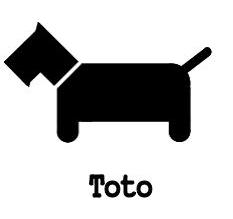Question: What do Tom Peters and Steven Levitt have in common?
Answer: They make a living out of having and using a rare and precious thing that has made them kings. Their magic is no secret: it’s common sense.
Tom Peters Says
Tom Peters is a classic great speaker. He’s charming, inspirational and a brilliant performer. It was interesting to hear him speak about excellence in the enterprise 25 years on from when ‘In Search of Excellence’ was first published. According to the title of his talk, he’s ‘Still in Search of Excellence’ – an observation that’s at once disconcerting as well as hopeful. Disconcerting because, from experience, we haven’t solved the problem yet (in spite of the number of man years spent in this pursuit); hopeful because it gives us something to do. Problems are good. It’s often the solutions that make things go from bad to worse. I’m constantly reminded that ‘the road to hell is paved with good intentions.’
Tom began by assuring the audience that we were all leaders – weren’t we? He then went on to say: ‘We all know we’re phonies and because we’re afraid to expose our weaknesses we don’t ask the interesting questions. It’s our job as leaders to ask interesting questions.’
Tom described the essence of enterprise as:
- Cause – worthy of commitment
- Space – for encouragement and initiative
- Decency – respect and humane
- Service
- Excellence
- Servant Leadership
He then hollered a typical management mantra to the crowd like some punk rock star: ‘Park your brain at the door dude and row the slave ship!’ then lowering his voice, he continued: ‘But we have computers to row the slave ship.’
According to Tom, our only chance to succeed in globalisation is to leverage the creative and intellectual skills of our teams. Starbucks is a good example of a human function being replaced by a machine. Since coffee making is done by a machine, what Starbucks buys is individuality in their staff. When asked why Starbucks staff are constantly smiling, one manager said as a matter-of-fact: ‘We hire people who smile.’
Tom, like Levitt, fully acknowledges that he has nothing profound to say. Instead, what he does has been described as ‘blinding flashes of the obvious’. So here’s the latest newsflash: ‘Put your people before your customers,’ says Tom Peters. What will you do?



